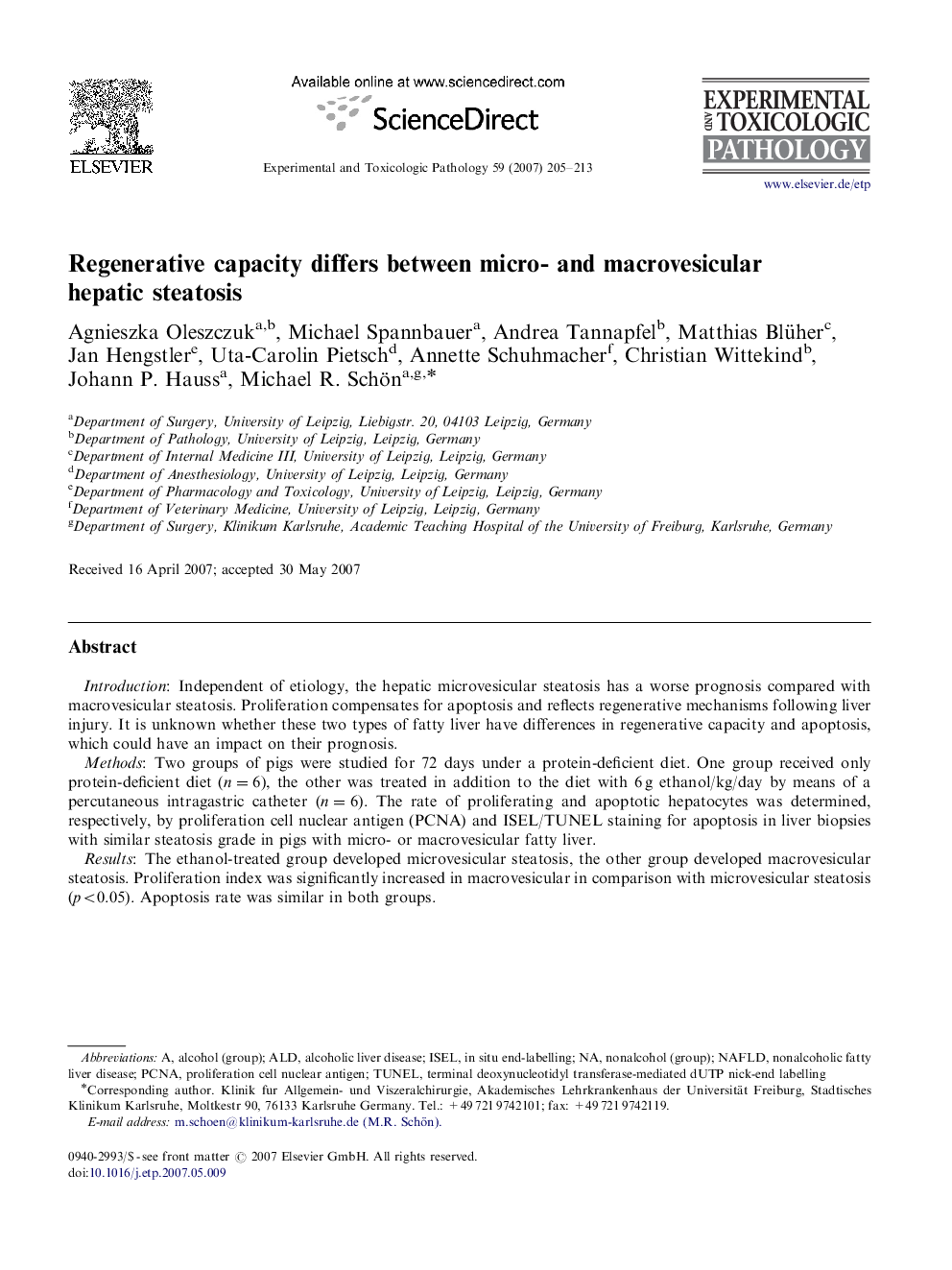| Article ID | Journal | Published Year | Pages | File Type |
|---|---|---|---|---|
| 2499893 | Experimental and Toxicologic Pathology | 2007 | 9 Pages |
IntroductionIndependent of etiology, the hepatic microvesicular steatosis has a worse prognosis compared with macrovesicular steatosis. Proliferation compensates for apoptosis and reflects regenerative mechanisms following liver injury. It is unknown whether these two types of fatty liver have differences in regenerative capacity and apoptosis, which could have an impact on their prognosis.MethodsTwo groups of pigs were studied for 72 days under a protein-deficient diet. One group received only protein-deficient diet (n=6), the other was treated in addition to the diet with 6 g ethanol/kg/day by means of a percutaneous intragastric catheter (n=6). The rate of proliferating and apoptotic hepatocytes was determined, respectively, by proliferation cell nuclear antigen (PCNA) and ISEL/TUNEL staining for apoptosis in liver biopsies with similar steatosis grade in pigs with micro- or macrovesicular fatty liver.ResultsThe ethanol-treated group developed microvesicular steatosis, the other group developed macrovesicular steatosis. Proliferation index was significantly increased in macrovesicular in comparison with microvesicular steatosis (p<0.05). Apoptosis rate was similar in both groups.ConclusionsRegeneration, but not apoptosis rate differs between micro- and macrovesicular steatosis. The reduced regenerative capacity in microvesicular steatosis may contribute to the worse prognosis of this subtype of fatty liver disease.
